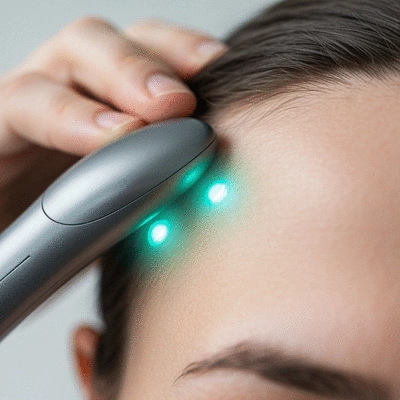Acute Migraine Treatments in 2025

When it comes to managing acute migraines, understanding your treatment options is crucial for reclaiming your life. As you navigate through complex choices, consider how each strategy can empower you to take control of your well-being.
What You Will Learn
- Acute migraines can severely affect daily life, leading to reduced productivity and emotional distress.
- Finding effective migraine relief often involves a frustrating process of trial and error with medications.
- Preventive medications, such as beta-blockers and antidepressants, can significantly decrease the frequency and severity of migraines.
- Abortive medications like triptans and NSAIDs provide quick relief from acute migraine symptoms.
- Non-pharmacological options, including neuromodulation devices and behavioral strategies, can complement traditional treatments.
- Lifestyle modifications, such as maintaining hydration, stress management, and proper sleep hygiene, play a vital role in migraine prevention.
Understanding Acute Migraine Treatment Options in 2025
This visual outlines the key challenges and various treatment categories for acute migraines, offering a clear overview of pharmacological and non-pharmacological approaches to managing this condition.
Challenges in Migraine Relief
- ✓ Trial & Error
- ✓ Side Effects
- ✓ Cost & Accessibility
Pharmacological Treatments
Preventive Meds:
- Beta-blockers
- Antidepressants
- Anti-seizure meds
Abortive Meds:
- Triptans
- Ergots
- NSAIDs
Non-Pharmacological Options
Neuromodulation Devices:
- Cefaly (TENS)
- TMS
- eTNS
Lifestyle & Behavioral:
- Acupuncture & CBT
- Hydration & Sleep
- Stress Management
Key Takeaway
Tailored treatment plans, combining various approaches, are crucial for effective migraine management.
Understanding Acute Migraine Treatment Options in 2025
Acute migraines can significantly disrupt daily life, often transforming ordinary activities into daunting challenges. Imagine waking up with that familiar pounding in your head, making it hard to focus on your work or enjoy time with loved ones. This very struggle is something I see often in my practice at Migraines Unraveled, and it's essential to understand the treatment options available in 2025 to regain control over those painful episodes.
Many individuals face barriers when it comes to finding effective migraine relief. The search for the right treatment can feel like navigating a complex maze, where not every path leads to success. This article aims to help you understand the current landscape of acute migraine treatments, making it easier for you to identify what might work for you.
The Impact of Acute Migraines on Daily Life
Living with acute migraines can take a heavy toll on your quality of life. The unpredictable nature of these headaches means you may need to cancel plans, skip work, or miss out on important events. Here are some common impacts of acute migraines:
- Reduced productivity: Chronic migraines can lead to frequent absenteeism or decreased performance at work.
- Emotional distress: The uncertainty and pain of migraines can contribute to anxiety and depression.
- Social isolation: Many migraine sufferers find themselves withdrawing from social activities to avoid triggering an episode.
At Migraines Unraveled, we strive to provide resources that empower individuals to manage their condition more effectively, ultimately easing these burdens and improving overall well-being. According to a recent clinical guideline from the American College of Physicians, understanding these impacts is the first step toward effective management.

Current Challenges in Finding Effective Migraine Relief
The journey to effective migraine relief is often riddled with challenges. Many treatments come with varying degrees of efficacy and potential side effects, leaving patients frustrated and uncertain. Here are a few challenges faced by those seeking relief:
- Trial and error: Finding the right medication often requires testing multiple options before discovering what works best.
- Side effects: Many medications can cause unwanted side effects, making patients hesitant to continue their use.
- Cost and accessibility: The financial burden of medications can be significant, particularly for those without adequate insurance coverage.
Understanding these challenges is the first step towards navigating your treatment options more efficiently. It’s crucial to remain open to discussions with your healthcare provider about what might work best for your unique situation.
Preventive Medications: A Comprehensive Overview
Preventive medications play a vital role in reducing the frequency and severity of migraines, offering hope to those who suffer from frequent attacks. These medications, tailored to individual needs, can significantly improve quality of life. Here’s a look at some widely used preventive options:
- Beta-blockers: Commonly prescribed to reduce the frequency of migraines.
- Antidepressants: Certain types can help manage migraine symptoms.
- Anti-seizure medications: These can also be effective in preventing migraines.
When considering preventive medications, it’s essential to work closely with your healthcare provider to determine which options are best suited for you. This proactive approach can lead to better management of your migraines and overall health. For more detailed information on preventive strategies, refer to guidelines from the International Headache Society, which highlight the importance of personalized treatment plans.
Understanding the Role of Abortive Medications
Abortive medications are used to treat migraines once they start, aiming to relieve symptoms quickly. These medications can be a lifeline for many sufferers. Quick intervention is key! Common abortive options include:
- Triptans: Often the first choice for acute migraine treatment.
- Ergots: Another class of medication that can be effective for some patients.
- NSAIDs: Non-steroidal anti-inflammatory drugs can provide relief for mild to moderate migraines.
Understanding how and when to use these abortive treatments can make a significant difference in managing migraine episodes.
Exploring Triptans, Ergots, and NSAIDs in Treatment Plans
When it comes to managing acute migraines, triptans, ergots, and NSAIDs are among the most commonly utilized medications. Each has its own set of benefits and limitations:
- Triptans: Highly effective for many, but they may not work for everyone.
- Ergots: Useful for those who don’t respond to triptans; however, they come with potential side effects.
- NSAIDs: Readily available over-the-counter and effective for mild migraines, but they may not be sufficient for more severe cases.
It's crucial to have a tailored treatment plan that considers your specific needs. I encourage you to discuss these options with your healthcare provider to create a strategy that works best for you!
Pro Tip
Did you know? Keeping a migraine diary can be a game-changer in your treatment journey. By tracking the frequency, duration, and triggers of your migraines, you can provide your healthcare provider with valuable insights that may lead to more effective treatment strategies tailored specifically for you.
Exploring Non-Pharmacological Acute Treatment Options
As a neurologist deeply invested in understanding and alleviating the impact of migraines, I’ve seen firsthand how non-pharmacological treatments can offer relief to many individuals. These approaches can be especially valuable for those who may not respond well to traditional medications or prefer to explore holistic methods for managing their migraine symptoms.
Within this realm, we find a variety of innovative strategies to support migraine management, focusing on enhancing overall wellness and reducing the frequency or intensity of migraine attacks. Let’s explore some of these non-drug options!

The Role of Neuromodulation Devices in Migraine Management
Neuromodulation devices are gaining attention as effective tools for migraine treatment. These devices work by delivering electrical impulses to the nervous system, which can help to alleviate pain and reduce the frequency of migraine episodes. Some popular neuromodulation options include:
- The Cefaly device, a transcutaneous electrical nerve stimulation (TENS) unit designed specifically for the forehead.
- Transcranial magnetic stimulation (TMS), which uses magnetic fields to stimulate nerve cells in the brain.
- External trigeminal nerve stimulation (eTNS), which targets specific nerves associated with migraine pain.
It’s encouraging to see that these devices can be used alongside traditional treatments, offering patients a multifaceted approach to managing their migraines. If you’re exploring alternative migraine relief, discussing these options with your healthcare provider could be a great next step! Further insights into these approaches can be found in resources like the Nursing Center's guideline summary on Migraine.
Behavioral Strategies and Lifestyle Modifications
Adopting behavioral strategies and lifestyle changes can significantly impact migraine management. While medications can help, integrating these modifications into your life can create a more sustainable approach. Here are a few strategies worth considering:
- Practicing mindfulness and relaxation techniques to reduce stress.
- Establishing a regular sleep schedule to improve sleep hygiene.
- Incorporating regular physical activity, which can boost overall well-being and potentially minimize migraine frequency.
These lifestyle changes are not only beneficial for migraine management but also promote overall health. Finding balance in daily routines can empower you as you navigate your migraine journey.
Understanding the Benefits of Acupuncture and Cognitive Behavioral Therapy (CBT)
Acupuncture and CBT have shown promising results in clinical studies for managing migraines. Acupuncture can help relieve tension and promote relaxation, while CBT focuses on identifying and changing negative thought patterns that can exacerbate pain. Both methods can be wonderful additions to your migraine management toolbox!
Importance of Hydration, Sleep Hygiene, and Stress Management
Hydration is frequently overlooked but is crucial in preventing migraine attacks. Adequate water intake can help stave off dehydration, a common trigger for migraines. Additionally, maintaining a consistent sleep routine can lead to better-quality rest, which is vital for overall health. And let’s not forget stress management! Finding effective ways to handle stress, such as through meditation or deep-breathing exercises, can make a significant difference in your daily life.
Frequently Asked Questions About Acute Migraine Treatment
- What are the main types of treatment for acute migraines?
- Acute migraine treatments fall into two main categories: pharmacological (medications) and non-pharmacological (lifestyle changes, devices, and behavioral therapies).
- What are some common challenges in finding effective migraine relief?
- Challenges include the need for trial and error with medications, potential side effects, and issues with cost and accessibility of treatments.
- How do preventive medications differ from abortive medications?
- Preventive medications are taken regularly to reduce the frequency and severity of migraines, while abortive medications are taken at the onset of a migraine attack to relieve symptoms quickly.
- What non-pharmacological options are available for migraine management?
- Non-pharmacological options include neuromodulation devices (e.g., Cefaly, TMS), behavioral strategies (e.g., CBT, acupuncture), and lifestyle modifications (e.g., hydration, sleep hygiene, stress management).
- Why is a migraine diary recommended?
- A migraine diary helps track the frequency, duration, and triggers of migraines, providing valuable insights to healthcare providers for developing more effective, personalized treatment strategies.
Recap of Key Points
Here is a quick recap of the important points discussed in the article:
- Understanding Acute Migraines: Acute migraines can disrupt daily life, making it essential to explore treatment options available in 2025.
- Challenges in Treatment: Patients often face trial and error in finding effective relief, with potential side effects and financial burdens complicating the process.
- Preventive Medications: Options like beta-blockers, antidepressants, and anti-seizure medications can reduce the frequency and severity of migraines.
- Abortive Medications: Quick intervention with triptans, ergots, and NSAIDs can significantly alleviate symptoms once a migraine starts.
- Non-Pharmacological Treatments: Neuromodulation devices, behavioral strategies, and lifestyle modifications such as mindfulness and hydration play a crucial role in managing migraines.
Popular Posts
 Consider how a simple change in weather can turn your day upside down—especially for those who suf
Consider how a simple change in weather can turn your day upside down—especially for those who suf
 For many migraine sufferers, finding effective relief can feel like a daunting challenge. Understand
For many migraine sufferers, finding effective relief can feel like a daunting challenge. Understand
 To truly take control of your migraines, understanding the differences between medication options is
To truly take control of your migraines, understanding the differences between medication options is
 As we look toward 2025, the evolution of acute migraine treatments is a promising journey filled wit
As we look toward 2025, the evolution of acute migraine treatments is a promising journey filled wit
